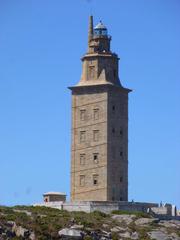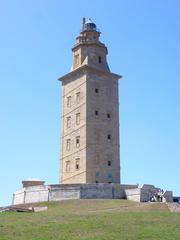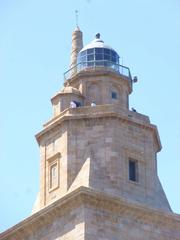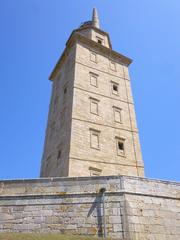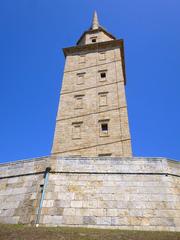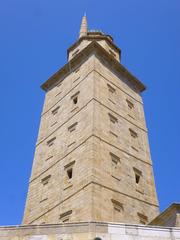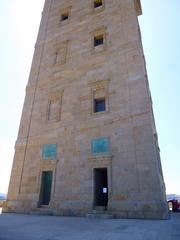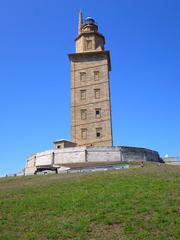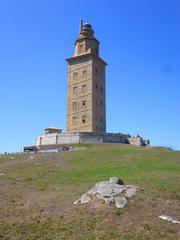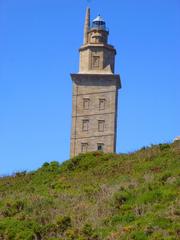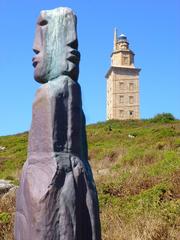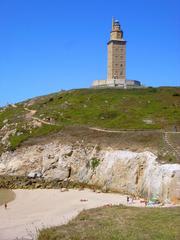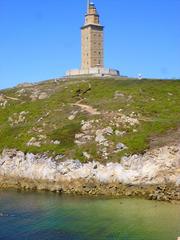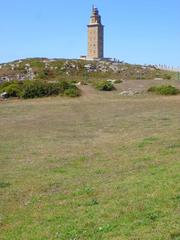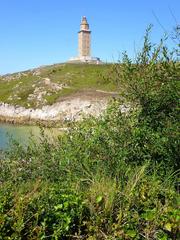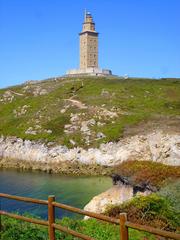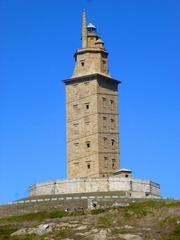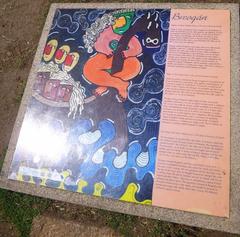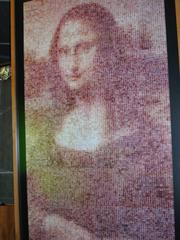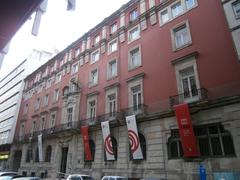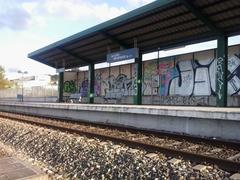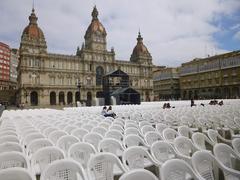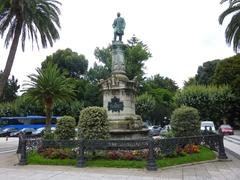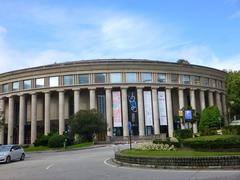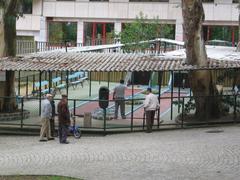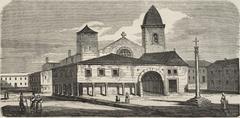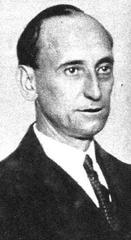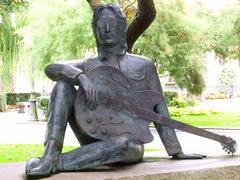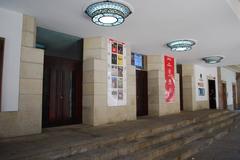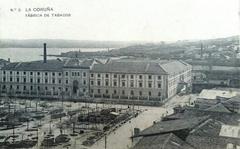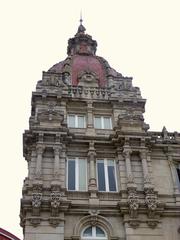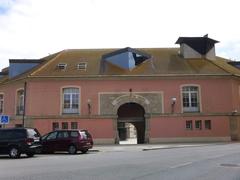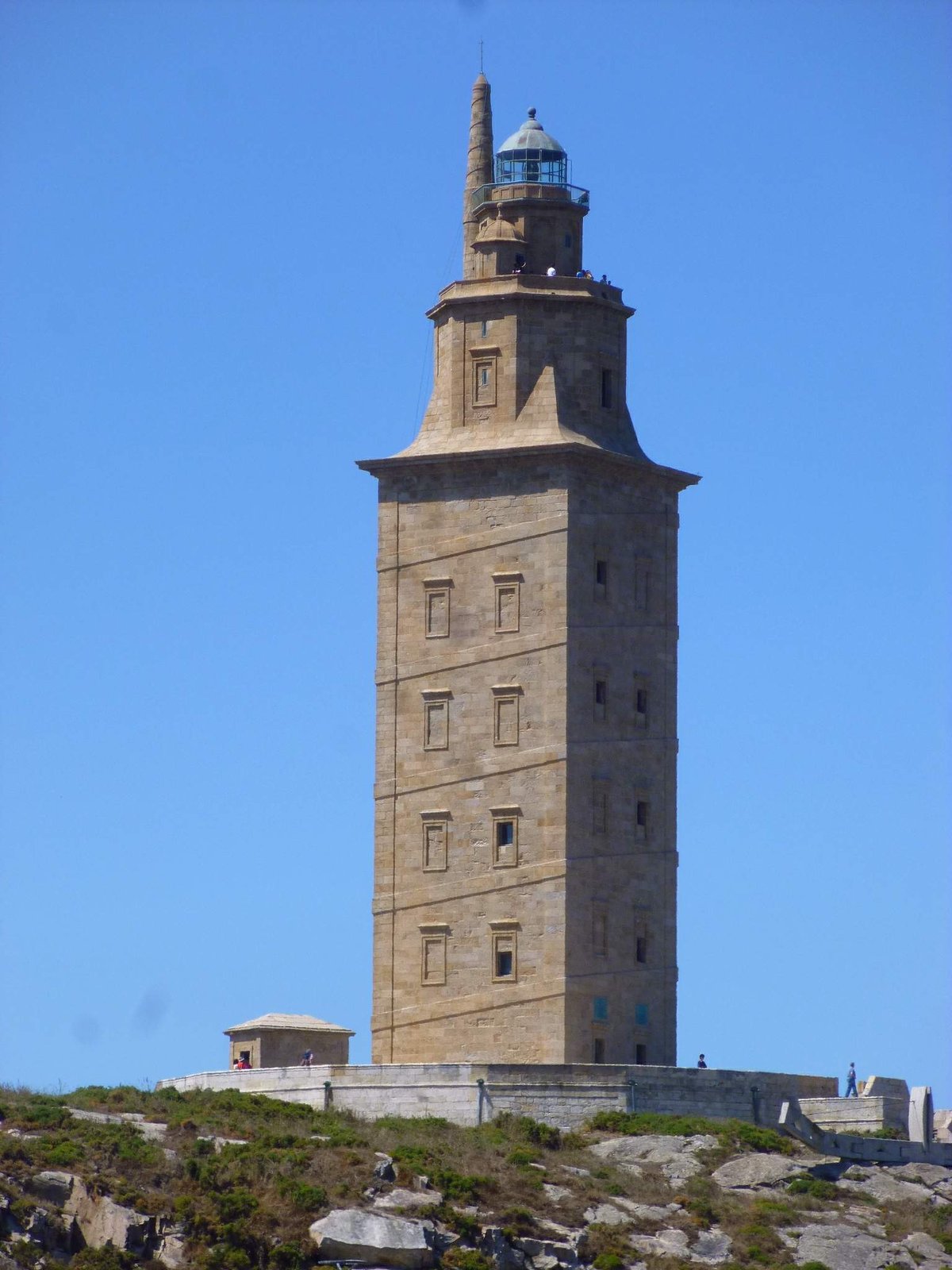
Tower of Hercules Visiting Hours, Tickets, and Complete Guide to A Coruña’s UNESCO Roman Lighthouse
Date: 14/06/2025
Introduction: The Tower of Hercules – A Beacon Through the Ages
The Tower of Hercules in A Coruña, Galicia, Spain, is not only the world’s oldest functioning Roman lighthouse but also a living symbol of maritime heritage, myth, and architectural innovation. Standing tall on the Galician coast for nearly two millennia, the tower blends ancient engineering, enduring legends, and modern cultural identity, making it a must-see destination for travelers and history enthusiasts alike (mad-traveller.com; galiciaguide.com). Recognized as a UNESCO World Heritage Site since 2009, the Tower of Hercules is treasured for its outstanding universal value and exceptional state of preservation (unesco.org).
This comprehensive guide covers everything you need to plan your visit: historical context, ticketing, opening hours, accessibility, nearby attractions, and practical tips for a rewarding experience at one of Spain’s most iconic historical sites.
Table of Contents
- Introduction
- Roman Origins and Historical Development
- Mythology and Cultural Symbolism
- Architectural Evolution and Features
- Visiting the Tower: Hours, Tickets, and Practical Information
- Accessibility and Visitor Facilities
- Attractions and Experiences
- Preservation, UNESCO Status, and Recent Developments
- Frequently Asked Questions (FAQ)
- Summary and Final Tips
- References & Official Sources
Roman Origins and Historical Development
Constructed at the end of the 1st century AD under Emperor Augustus, the Tower of Hercules—originally known as Farum Brigantium—was designed by the Roman engineer Gaius Sevius Lupus. Its strategic location overlooked the Atlantic near Brigantium (modern A Coruña), serving as a crucial lighthouse for trade and naval navigation between the Mediterranean and North Atlantic (mad-traveller.com; turismo.gal).
The original Roman core, rising 34 meters, was built from granite with a square base and a central spiral ramp—an innovation inspired by the Lighthouse of Alexandria (worldheritage-mania.com). Over the centuries, the tower underwent periods of neglect and restoration, culminating in a major 18th-century neoclassical renovation by architect Eustaquio Giannini. Today, it stands at 55 meters, seamlessly integrating Roman and neoclassical elements.
Mythology and Cultural Symbolism
Legends of Hercules and Celtic Heritage
The tower’s name is rooted in Greco-Roman myth. Local legend recounts Hercules’ victory over the giant Geryon, whose head was buried beneath the tower’s site, marking the founding of Brigantium (galiciaguide.com; fascinatingspain.com). The tower is also entwined with Celtic lore, seen as the mythical Tower of Breogán, from which the Celts are said to have glimpsed Ireland. This legend is honored with a statue of Breogán and the Rosa dos Ventos mosaic nearby (caminosantiagocompostela.com).
Artistic and Civic Influence
The Tower of Hercules is a symbol of A Coruña, appearing in the city’s coat of arms and inspiring countless artists, writers, and local festivals. The adjacent sculpture park features works by renowned Galician artists, reflecting the tower’s ongoing influence in regional culture (wikipedia.org).
Architectural Evolution and Features
Roman Core and Neoclassical Restoration
- Roman Structure: Lower 34 meters, granite masonry, square base, central spiral ramp for fuel transport.
- Neoclassical Additions (1789–1791): Stone façade, symmetrical (often false) windows, spiral band motif, and two octagonal upper tiers, raising the height to 55 meters (worldheritage-mania.com).
- Materials: Local granite chosen for its resistance to sea air; restoration stone matches original for visual unity.
Engineering Innovations
The spiral ramp inside the Roman core is a rare feature among ancient lighthouses, enabling the movement of fuel to the beacon. The tower’s robust construction has endured centuries of Atlantic storms and modifications, and it still operates as a lighthouse, with a modern beacon visible up to 23 nautical miles (coruna.gal).
Visiting the Tower: Hours, Tickets, and Practical Information
Location & How to Get There
The Tower of Hercules is located on the peninsula of A Coruña, at Avda. Doctor José L. Vázquez Iglesias s/n, 15002, A Coruña. It is about 2.5 km from the city center and accessible by foot, bicycle, public bus, or taxi. Bus Coruña app provides real-time schedules.
GPS: 43.3850° N, 8.4066° W
Visiting Hours (as of June 2025)
- April – September: 10:00–21:00
- October – March: 10:00–18:00
- Last entry: 30 minutes before closing
- Closed: January 1st and December 25th; check official website for updates
Tickets and Admission
- General Admission: €3.00
- Reduced Admission: €1.50 (students, seniors, groups, large families)
- Free Entry: Mondays and select dates (e.g., International Museum Day—confirm on official website)
- Purchase: On-site at the Visitor Center (CIAV) or online (recommended during peak season)
Best Times to Visit
- Early morning or late afternoon for the best light and fewer crowds.
- Mondays are free but can be busy; midweek is usually quieter.
Accessibility and Visitor Facilities
Accessibility
- Visitor Center & Sculpture Park: Wheelchair accessible.
- Tower Interior: 234 steps; no elevator. Not suitable for those with mobility issues or certain health conditions (adventurebackpack.com).
Visitor Services
- Multilingual information panels and brochures
- Guided tours (book on-site or online)
- Restrooms, lockers, and a souvenir shop
- Multilingual staff (Spanish, Galician, English)
Attractions and Experiences
Climbing the Tower
The climb to the summit involves 234 steps with interpretive displays at several landings. The observation deck offers panoramic views of the Atlantic, A Coruña, and the coast—ideal for photography.
Sculpture Park & Coastal Walks
The 47-hectare park features contemporary sculptures inspired by Galician mythology, including the Menhir Pentacefálico, Rosa dos Ventos mosaic, and statues of Breogán and Hercules. Coastal trails and nearby beaches (Orzán, Riazor) offer additional leisure options (adventurebackpack.com).
Nearby Attractions
- Aquarium Finisterrae
- Old City of A Coruña
- Maria Pita Square
Preservation, UNESCO Status, and Recent Developments
The Tower’s designation as a UNESCO World Heritage Site in 2009 celebrates its exceptional preservation and global importance as the only Roman lighthouse still in operation (unesco.org). Ongoing conservation efforts have recently been boosted by €995,000 in European funding and €200,000 from the municipality for accessibility and educational improvements (torredeherculesacoruna.com). A tourist tax is under consideration to support maintenance and services.
Frequently Asked Questions (FAQ)
Q: What are the Tower of Hercules visiting hours?
A: April–September: 10:00–21:00. October–March: 10:00–18:00. Last entry 30 minutes before closing.
Q: How much do tickets cost?
A: General €3.00; reduced €1.50. Free on Mondays and select dates.
Q: Is the Tower accessible for people with disabilities?
A: The park and visitor center are accessible; the tower’s interior requires climbing stairs.
Q: Are guided tours available?
A: Yes, bookable at the visitor center or online.
Q: Can I take photos?
A: Yes, photography is permitted throughout the site.
Q: What about parking?
A: Parking is limited near the monument. Walking or public transport is recommended.
Summary and Final Tips for Visiting the Tower of Hercules
The Tower of Hercules stands as a unique blend of Roman architectural mastery, mythological resonance, and modern civic pride. Climb its 234 steps for stunning Atlantic views, explore the sculpture park, and delve into local legends that connect Galicia to the broader Celtic world. With affordable tickets, accessible amenities, and ongoing preservation, this UNESCO World Heritage Site offers a rich, immersive experience for all visitors (mad-traveller.com; coruna.gal; torredeherculesacoruna.com; trek.zone).
Enhance your visit by downloading the Audiala app for guided tours and up-to-date information, and follow official channels for special events and travel tips. Respect the site by staying on marked paths and helping preserve its legacy for future generations.
References and Official Sources
- mad-traveller.com
- galiciaguide.com
- turismo.gal
- worldheritage-mania.com
- fascinatingspain.com
- caminosantiagocompostela.com
- adventurebackpack.com
- torredeherculesacoruna.com
- unesco.org
- coruna.gal
- trek.zone
- wikipedia.org
